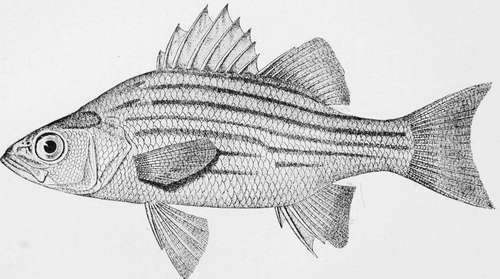The Darters-Etjicostoma
Description
This section is from the book "American Game Fishes", by W. A. Perry. Also available from Amazon: American Game Fishes: Their Habits, Habitat, and Peculiarities; How, When, and Where to Angle for Them.
The Darters-Etjicostoma
But more interesting than the real Perch was a little fish in blue and crimson which we found lying in the bottom of the river, insensible to any bait we were able to offer it. It was not more than two inches long, and as slender as a shingle nail. We rigged up an impromptu dip-net and succeeded in taking some of them. We had never seen them before, and that is not strange, for they were then new to science. Later they received their name of EtJicostoma cos, the Darter of the Sunrise.

When we found these little fishes, we cared no longer for the Perch, great, gaudy yellow fellows, fit only to be fried, while these were as beautiful as the dawn for which we named them, (Etheostoma cos) and as delicate as they were beautiful.
Still, these little "Darters" are the children of the Perch, if the tales of the evolutionist can be trusted, and the Perch is chiefly interesting to me on account of its singular progeny.
There are some seventy kinds of Darters, all dwarf or diminutive Perches, and swarming on the bottoms of every clear stream from Quebec around to Rio Grande and beyond. The largest of them is not more than eight inches long, and the smallest less than two, yet in spite of their littleness they are not so much dwarfed as concentrated fishes, each one as perfect in form as the Perch, and as delicate in color as though it had been separately hand-painted.
These diminutive creatures are Perch in all their essentials, and seem to have arisen in the first place from the adaptation of young Perch to smaller and smaller streams and scantier sources of food supply.
But the story of the Darter is a long story, much longer than the story of the Perch, and few anglers will listen to it, for though Rafinesque says "They are good to eat, fried," each one has about as much meat as a beech-nut, and one would as soon think of filling his pan with wood-warblers as his creel with the "Darter-perches."
Continue to:
- prev: The Yellow Perch-Perca Flavesccns (Mitchill)
- Table of Contents
- next: The Yellow Bass-Moronc Intcrrupta (Gill)
